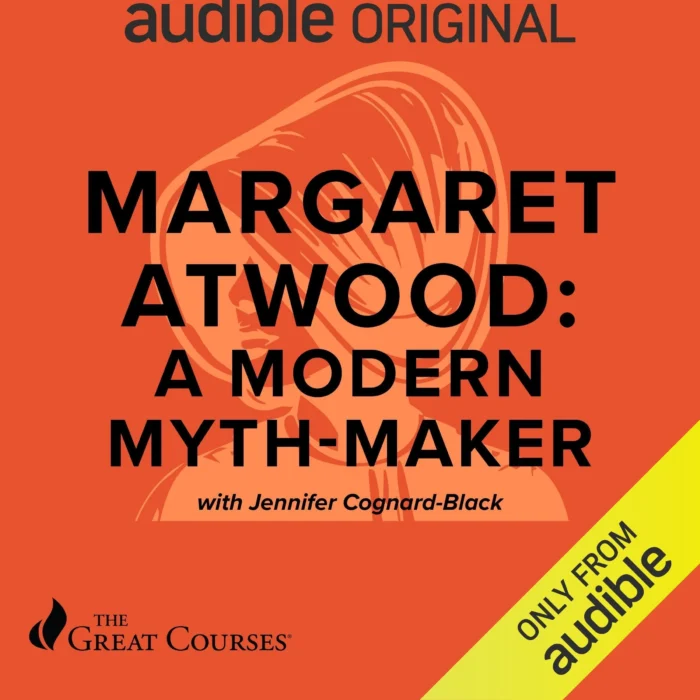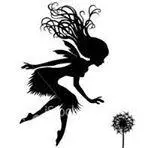Please scroll down for an English review.
מיתוסים ישנים, מיתולוגיות חדשות , ובלבול אחד גדול
לפעמים נדמה שכל המיתוסים הגדולים, מהומרוס ועד הוליווד, נכתבו על ידי גברים, בשביל גברים , כדי לשכנע את עצמם שהם גיבורים. ג'וזף קמפבל קרא לזה "מסע הגיבור": סיפור על גבר אחד שיוצא לקרב, נלחם במפלצות, מגלה אמת גדולה , וחוזר עם תובנה. נשים? במיתוסים האלה הן תמיד הקהל, המכשפות, הגבירות שצריך להציל.
בסידרת הרצאות של ג'ניפר קוגנרד- בלאק "Margaret Atwood: A Modern Mythmaker", היא מנסה לעמוד על האופן שבו "סיפורה של שפחה" הפך למיתולוגיה חדשה.
מרגרט אטווד, כותבת סיפורים שמנערים את האבק מעל המיתוסים הישנים , ומחזירה את קולן של הנשים. ברומנים, השירים והסיפורים הקצרים שלה, המספרות הנשיות הן לעיתים דמויות מיתולוגיות , כאלה שחושבות מחדש ומעצבות מחדש את המסגרות שחונקות אותן, ויוצרות סיפורים חדשים שמתמודדים עם סוגיות מודרניות של מגדר וכוח. התהליך הזה, מיתיפיקציה מחדש, כולל אימוץ של סיפורים ואגדות ישנים נועד לא כדי לסגוד להם, אלא כדי להאיר את האופן שבו נשים מוצגות לעיתים קרובות: כמפלצות, כנשלטות, כמושתקות.
כמו שאומרת המבקרת שרון רוז וילסון , אטווד משתמשת באגדות, מיתוסים ופולקלור כדי להפוך את המפלצתיות הזו לכוח חדש ולהוציא את הנשים מהעמדה המסורתית שלהן.
פנלופה של אטווד היא כבר לא האישה שמחכה בשקט, אלא מספרת שמפרקת את הדימוי של אודיסאוס כגיבור, וחושפת את ההונאות והרציחות שמאחורי האגדה. או את "סיפורה של שפחה", שהפך בעצמו למיתולוגיה מודרנית: סיפור על אישה אחת, שלפרד, שהופכת לגיבורה מסוג חדש, לא בזכות כוחות על, אלא בגלל עקשנות ותקווה.
אבל אחרי ההקדמה הארוכה והמפורטת, כשהמרצה אומרת שהיא תחקור את "הרעיון המרכזי הזה", לא ברור למה היא מתכוונת.
האם היא רוצה להבין איך "סיפורה של שפחה" הפך למיתוס חדש?
או אולי היא רוצה לנתח את "מסע השפחה" כמונומיתוס נשי?
או אולי היא פשוט מצביעה על כך שהסיפור הזה מתרחש עכשיו – במציאות האפלה של ארה"ב של אחרי 2024?
מכאן הדברים הופכים להיות מעורפלים יותר וזה מגיע לשיא בהרצאה האחרונה, שבה היא פתאום מדברת על אטווד כאורקל מודרני , נביאת זעם מול עליית הטוטאליטריות וההתפתחויות הפוליטיות בארה"ב. יתכן שהכל נכון, אבל זה גם קצת יותר מדי מפוזר.
בין המיתוסים, המסעות והרפרנסים, נשארתי בעיקר עם שאלה אחת:
מה היא בדיוק ניסתה להגיד לנו בהרצאות?
🤔 אולי זה דווקא המסר האמיתי של ההרצאות האלה: שגם כשאנחנו מספרים מחדש מיתולוגיות , לא תמיד ברור לנו לאן אנחנו הולכים. והסיפור היחיד שבאמת חשוב? הוא זה שאנחנו כותבים מחדש בעצמנו , בכל מילה, בכל בחירה. אומנם ניכר שיש מחקר מאחורי ההרצאות, אבל המסר שלהן לא לגמרי אפוי.
Margaret Atwood: A Modern Mythmaker/ Jennifer Cognard-Black
Audible Edition, 3H, 2025
דירוג SIVI –
איכות אודיו –

Old Myths, New Mythologies , and One Big Confusion
Sometimes it feels like all the great myths, from Homer to Hollywood, were written by men, for men, to convince themselves they’re the heroes. Joseph Campbell called it the “hero’s journey”: a story about one man who goes out to battle, fights monsters, discovers some great truth, and comes back wiser. Women? In those myths, they’re always the audience, the witches, the ladies who need saving.
In the lecture series by Jennifer Cognard-Black: Margaret Atwood: A Modern Mythmaker, she tries to explore how The Handmaid’s Tale has become a new mythology.
Margaret Atwood writes stories that shake the dust off those old myths, giving women back their voices. In her novels, poetry, and short stories, her female storytellers are often mythological figures, rethinking and reshaping the frameworks that confine them, creating new stories that tackle modern issues of gender and power. This process, called “remythification,” involves adopting old stories and legends – not to worship them, but to highlight how women are so often portrayed: as monsters, as controlled, as silenced.
As literary critic Sharon Rose Wilson says, Atwood uses the intertext of fairy tales, myths, and folklore to turn that monstrous image into a new kind of power, and to move women out of their traditional roles.
Atwood’s Penelope is no longer the patient wife waiting quietly; she’s a storyteller, tearing down the image of Odysseus the hero, revealing the lies and murders behind the legend. Or consider The Handmaid’s Tale itself, which has become a modern mythology: the story of one woman, Offred, who becomes a new kind of hero, not because of superpowers but because of stubbornness and hope.
But after the introduction, when the lecturer says she’ll explore this “central idea,” it’s unclear what she means.
Is she trying to understand how The Handmaid’s Tale became a new myth?
Or maybe she wants to analyze “the journey of the handmaid” as a female monomyth?
Or is she just pointing out that the story is happening in the dark reality of post-2024 America?
In the last lecture, she suddenly talks about Atwood as a modern oracle, a prophet of rage confronting the rise of totalitarianism and political turmoil in the U.S. All of it is true, but also scattered.
And between the myths, the journeys, and the endless references, I was left with one main question:
What exactly was she trying to tell us in these lectures?
🤔 Maybe that’s the real lesson: even when we rewrite myths, we’re never sure where the journey will lead. And the only story that matters? It’s the one we keep writing ourselves-in, every word, in every choice.
Although there’s solid research behind these lectures, the direction of the message still feels half-baked.
לגלות עוד מהאתר Sivi's Books
Subscribe to get the latest posts sent to your email.
